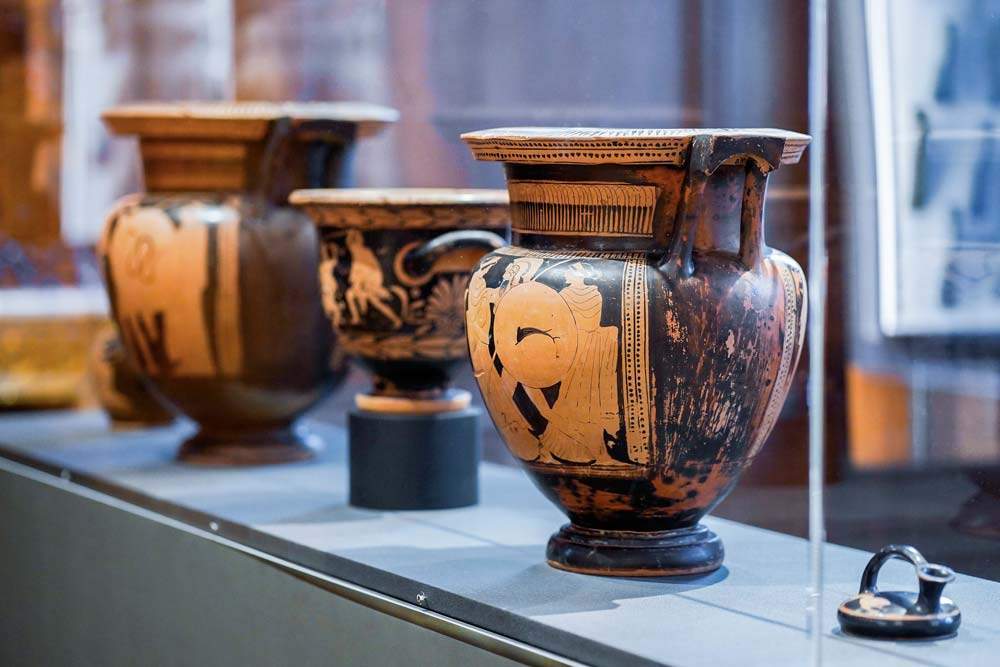Milan, an exhibition on the Spina Etruscans and the link between the Etruscans and Milan, in two locations
Scheduled from Feb. 2 to March 5, 2023, as part of the national celebration of the centenary of the beginning of the excavation of the Etruscan city of Spina, is the exhibition Spina Etruscan and the City of Milan, organized by Fondazione Rovati in collaboration with the City of Milan and the Civic Archaeological Museum of Milan. It takes place at both the Foundation and the Civic Museum.
At the Fondazione Luigi Rovati headquarters, the exhibition displays a selection of Attic red-figure vases, dating back to the fifth century B.C., from the deposits of the Civico Museo Archeologico, bearing witness to the richness and variety of grave goods found in the thousands of excavated tombs. The Civic Archaeological Museum, at the same time, is offering at its headquarters in Corso Magenta an exhibition of other finds from Spina and an in-depth look at the city of Milan’s contribution to the excavations, testifying to the city’s great interest in the Etruscan world. A trading port on the Po delta with a dominant role in the Adriatic, Spina was founded by the Etruscans around 540 B.C. and long represented the gateway to the Mediterranean for the entire Etruscan-Paduan area.
The five Attic vases on display in the Rovati Foundation-two columnar craters, a trilobate Oinochoe, a bell crater and an Askos-decorated with the red-figure technique and dating from the fifth century B.C., were found in the city’s necropolis and testify to Spina’s key role in trade with Greece. Their arrival at the Civic Archaeological Museum of Milan in July 1957, as part of a larger nucleus comprising a total of twenty-six ceramic artifacts, took place as part of a collaboration involving the City of Milan, the Ente Pro Spina and the Ministry of Education, which at the time had jurisdiction over the Cultural Heritage now in the hands of the Ministry of Culture. To support the archaeological investigation of the site and combat clandestine excavations, the Municipality then allocated a fund of five million liras, against which it obtained from the Ministry the transfer of a lot of vases from seizures made by the Guardia di Finanza. This confirms Milan’s connection with the Etruscans, in keeping with an interest the city has cultivated since the age of the Risorgimento and with continuity since World War II, and expresses the important role of institutions in the preservation and enhancement of Italy’s cultural heritage. For information visit the websites of the two museums: www.fondazioneluigirovati.org and https://www.museoarcheologicomilano.it/
Pictured: the vases at the Rovati Foundation. Photo: Daniele Portanome
 |
| Milan, an exhibition on the Spina Etruscans and the link between the Etruscans and Milan, in two locations |
Warning: the translation into English of the original Italian article was created using automatic tools. We undertake to review all articles, but we do not guarantee the total absence of inaccuracies in the translation due to the program. You can find the original by clicking on the ITA button. If you find any mistake,please contact us.




























